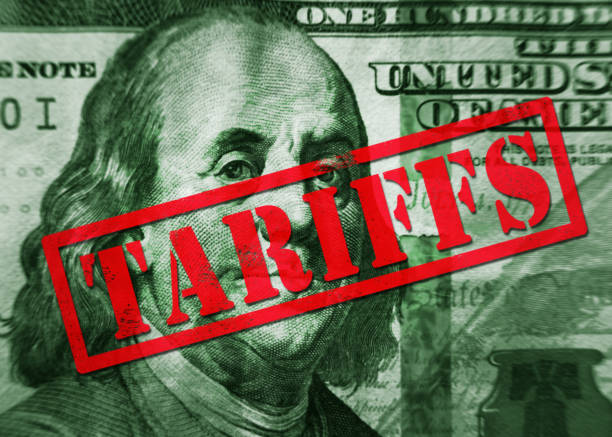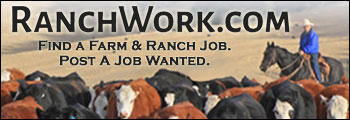DENVER — US consumer and business sentiment turned sharply negative in the past two months due to anxiety over tariffs, but key economic indicators are still suggesting that the economy remains fairly strong, according to a new quarterly report from CoBank’s Knowledge Exchange released on April 10.
“The question on the minds of investors, businesses and corporate boards is whether the declining expectations will soon translate into slower spending and tightening profit margins,” they said.
The answer likely will come into view by the end of June, if not sooner. Historic data suggests that declines in consumer spending begin to become apparent three to five months after a sharp decline in economic sentiment.
“Not including the brief pandemic-related recession, which was overwhelmed by massive government stimulus, the previous three US recessions in 1990, 2000 and 2007 were all forewarned by weakening sentiment that led to a steep decline in consumer spending,” said Rob Fox, director of CoBank’s Knowledge Exchange. “The next set of hard data from reports on retail sales and consumer spending should begin to provide some guidance as to which way the economy is heading.”
In the animal protein section of the report, CoBank explained how record-high prices for the beef cattle sector continue in 2025 during continued herd liquidation and delayed rebuilding.
“Despite volatility in the US cattle herd, the beef sector has been able to maintain production to meet strong consumer demand,” the bank said. “Through the third week of March, US beef production was up slightly compared to 2024.”
CoBank added weekly dressed weights pushed 3% to 6% higher than a year ago, by hitting a record 882 lbs per head in late January. Still, packer margins remain squeezed as feeder cattle prices continue to climb.
“Lean beef is becoming scarcer as fewer beef and dairy cows are sent to slaughter, further accelerating the price growth for ground beef,” said Brian Earnest, lead animal protein economist for CoBank in the report. “In 2025, the US will import more lean beef from countries like Australia and Brazil to help meet demand.”
The pork sector continues to see a position for moderate growth in 2025, supporting hog prices and keeping pork an affordable protein alternative to beef.
“Growing export opportunities and strengthening domestic interest in pork are moving US hog prices higher,” the bank said. “Lean hog and cutout prices were up to start 2025 and early signs of an upward turn in the production cycle are emerging.”
Through February 2025, pork producer margins have been positive for 11 consecutive months, according to CoBank.
“However, nearly one year of profit has not been enough to offset the steep declines seen in 2023 where margins averaged $29/head loss,” the report said.
For the poultry sector, strong broiler prices and low inventory levels continue to fuel optimism, with production metrics yielding a moderately favorable outlook in 2025.
CoBank explained that even with breast meat prices on the rise, foodservice outlets continue to be incentivized to feature white meat chicken due to the record high prices for beef.
“That bodes well for broiler integrators and consumers as the chicken segment tends to attract shoppers seeking value,” the bank said.
Uncertainty over trade and biofuel policy pulled corn, soybean and wheat prices down last quarter, despite the tailwind of a weakening US dollar. Trade concerns weighed most heavily on wheat prices as world buyers have multiple exporters at their disposal.
The new tariff regime remains likely to increase inflation and cut economic growth, Fox said.
“While the severity of the near-term effects is up for debate, the longer-term impact of capricious US trade policy is the likely loss of trust abroad in US policymaking, something that will be very hard to regain,” he said.
US grain stocks on March 1 revealed a strong usage pace for corn and soybeans, but wheat usage continued to fall. Farmers said they intend to plant significantly more acres to corn and less to soybeans and wheat, with corn offering the greater profit opportunity.
The USDA forecasts total wheat acres planted in the United States at 45.350 million, down 1.6% year over year and the second lowest since 1919.
Crop production expenses are expected to continue trending downward, but they remain elevated in relation to lower commodity prices. While fertilizer prices have fallen, last year’s wet fall will require heavier spring applications and rising corn acreage signals more demand for nitrogen.
Renewable diesel and biodiesel production has scaled back to find stability in the absence of the blender’s tax credit, pushing prices above petroleum. Domestic production was down 41% year over year for January and February as margin pressure exceeded projections.
Establishment of the renewable volume obligations under the Renewable Fuel Standard and decisions on the Clean Fuel Production Credit largely will determine the trajectory of biofuels demand and production.
Articles on The Cattle Range are published because of interesting content but don't necessarily reflect the views of The Cattle Range.















